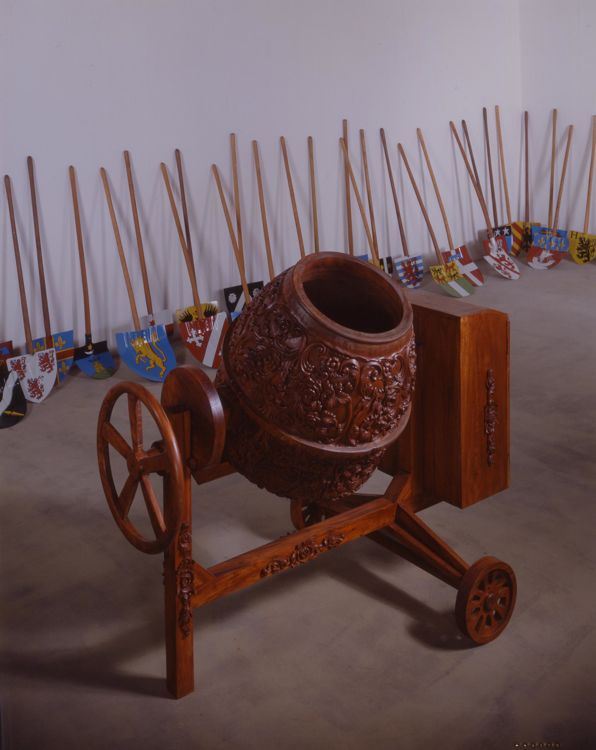Wim Delvoye
Wim Delvoye’s installations appropriate typical “artistic” images, such as Delft ceramic figurines, abstract patterns from Oriental carpets, or more generally the motifs often found in various elements of domestic décor. Linked to objects other than those for which they were originally intended, these emblems become decontextualized. Delft decorations are applied to metal saws, Oriental patterns to abstract paintings, military camouflage patterns to garden urns. These humorous incongruences result in a sense of psychological distancing for the viewer.
Installazione Castello di Rivoli (Castello di Rivoli Installation), 1990–91, consists of a wooden sculpture of a cement mixer, featuring carved decoration and accompanied by hundreds of shovels, the blades of which are painted to represent the coats of arms of European cities. On one level of interpretation, in its metonymic use of construction equipment, the work is a monument to labor.
On another, related level, the work deliberately plays with the discrepancy between the explicit “significance” of the objects and their formal elaboration. The cement mixer is made out of an unexpected material, wood, which is inlaid, like a faux-antique style wardrobe. The object itself is faux a cement mixer that evokes another object, a wardrobe.
In the juxtaposition of cement mixer and shovels, finally, there is a third level of interpretation, this time a more implicit one that constitutes the “theme” of the installation.
All the shovels are painted like heraldic coats of arms. The heraldic emblem usually refers to the concept of a self-contained community, distinct and proud of its unique character. But the combination of coats of arms, shovels, and cement mixer calls this association into question. The implication is more one of overcoming of individual characteristics and the need for cooperation in order to achieve a common goal.
[GV]
